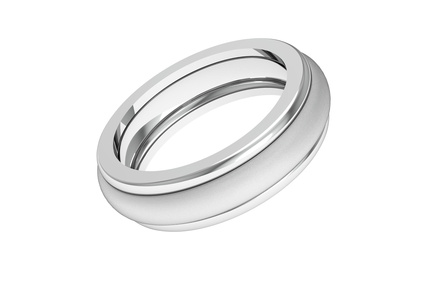What Is a Princess Cut?
The princess cut was developed in the 1960s. It is a brilliant diamond cut with a rectangular or square shape.
The princess cut is very popular, perhaps more sought after than any other cut except the classic round brilliant.
Browse a selection of princess-cut diamonds.
Which Diamond Cuts Are Referred to as Square Cuts?
Rectangular diamond cuts whose all four sides are equal when looked at from the top are referred to as square cuts.
If a jeweler tells you that a rectangular diamond has a length-to-width ratio of 1, this means the same thing – i.e. the cut in question has a square shape.
Most rectangular cuts have square variations, and the most popular square cuts are the princess cut, the emerald cut, the Asscher cut, and the radiant cut.
The cushion cut can also be considered a square cut by some, although its profile has rounded corners.
Princess Cut vs. Radiant Cut
Unlike the princess cut, the radiant cut doesn’t have sharp corners – they are truncated.
See here a collection of radiant-cut diamonds.
The radiant cut tends to have slightly more depth. It also reflects light differently, and its brilliance looks more sparkly, whereas the princess cut exhibits a more linear pattern of light reflection.
Radiant cuts tend to retain more color compared with princess cuts.
It is recommended that a radiant should have a color grade of no less than F, G or H if set in white gold or platinum, and I or J if set in yellow gold.
(For the sake of comparison, the recommended minimum grades for princess cuts are in the G-H-I range for white metals and in the J-K range for yellow gold).
Princess Cut vs. Emerald Cut and Asscher Cut
The emerald cut is a step cut, meaning that it is not designed to maximize brilliance, unlike the princess cut, which is a brilliant cut. (Browse emerald-cut diamonds here.)
The Asscher cut is actually the square variation of the emerald cut. Here you can see loose Asscher-cut diamonds.
The facets of the emerald cut are shaped and arranged in a more linear fashion compared with those of the princess cut. The emerald cut also displays much less brilliance and sparkle.
Because of this characteristic, depth is not as important for this type of cut as it is for the princess cut, in which a shallow bottom can result in reduced brilliance.
The emerald cut also tends to show color more easily than the princess cut, and it is not recommended to go lower than H color when buying an emerald-cut stone, especially if you are going to set it in white gold or platinum.
Any color grade lower than that may have visible yellow tints.
Because of its low brilliance, the emerald cut does not mask flaws well. This is why you should not buy a clarity grade lower than VS1-VS2 or you may start seeing inclusions visible with the naked eye.
Princess Cut vs. Cushion Cut
The cushion cut does not look exactly rectangular because of its rounded corners, which make it look more like a pillow. There are many variations of the cushion cut, which, like the princess cut, belongs to the group of brilliant cuts.
Click here to browse a collection of cushion-cut diamonds.
Because of the variety of cushion cuts, it is hard to say how this cut differs from the princess cut in terms of brilliance – some cushion cuts are as brilliant as a proportional princess-cut; others may display significantly less brilliance because of the shape of their facets.
What to Pay Attention to When Choosing a Square Cut
When choosing a square cut, it is important to see how each of the diamonds you are considering will look when worn compared to the others.
Be sure to evaluate the brilliance, color, and clarity of each stone with your own eyes, and do not rely only on the written grading reports for the diamonds.
Don’t forget that unlike most other square cuts, the princess cut has sharp corners, which need to be protected by the setting. One of the best options is to set such a stone in V-shaped prongs, which will hold its ends securely with metal.
Where to Buy Diamond Jewelry?
We recommend James Allen (read review) because you can see a 360-degree video for any diamond before buying it.
Blue Nile is another reputable diamond retailer we recommend.















